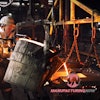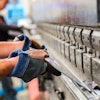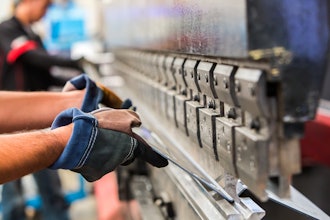
American manufacturing is in the news these days. A sudden wave of optimism about growth possibilities seems to pervade the media. There has been a lot of happy talk in 2013 about the future of manufacturing with the media describing manufacturing as “a surprising bright spot in the U.S. economy” (New York Times) and “a resurgence” (PwC).
In fact, the Boston Consulting Group is projecting that the U.S. is in a strong position to, by around 2015, add two to three million jobs and an estimated $100 billion in annual output in a range of industries.
But, short term improvements in jobs or sales are like a sick person getting some medicine from the doctor and feeling better the next day. A very thorough examination of all of the vital signs might show that the patient actually has a debilitating disease that will eventually render the patient bedridden over time. A real assessment of American manufacturing also requires a longer term examination of manufacturing vital signs.
The 10 Manufacturing Vital Signs
1. Manufacturing Jobs: Information from the Bureau of Labor Statistics shows that manufacturing reached a peak of about 17.2 million workers in 2000. As of 2009, manufacturing employment was 11.4 million workers. Around 5.8 million jobs were lost during the decade and so far we have gained back a little over a 500,000 jobs in the recovery. Most of the loss in manufacturing jobs coincided with the acceptance of China into the WTO, an increase in off-shoring, and the huge increase in imports from China.
President Obama has pledged to create one million new manufacturing jobs in his second term by the year 2015, but as of September we are 974,000 jobs away from realizing the goal, according to the Alliance for American Manufacturing’s Jobs Tracker.
2. Secondary Jobs: Manufacturing stimulates employment in other sectors at a greater pace than other industries. On average, each new manufacturing job creates about 2.9 other jobs in the economy. This “multiplier effect” is what makes new manufacturing jobs so important, but it is a meaningless statistic if manufacturing doesn’t create a lot more jobs.
3. Manufacturing Locations: From 2000 through 2011, America lost more than 58,000 manufacturing locations. This number has gone down every year since the high of 354,498 in year 2000. So in terms of new start-up companies, manufacturing is still declining.
4. R&D: Innovation and R&D have been a traditional strength of the U.S. for decades. In fact, innovation and new technologies are the key to making American manufacturing competitive in the future and manufacturing R&D is vital because it is 70 percent of all business R&D.
Census Bureau data shows that investment in R&D (both public and private) has been pretty stable for 30 years and averages about 2.5 percent of GDP. Contrary to recent articles that argue that American R&D is in serious decline, the overall numbers are pretty stable. However, there are some disturbing trends: The government’s contribution to R&D is important because it has traditionally done the basic research that leads to applied R&D and spillovers for new products. Many of the basic research projects have been in physics, materials, and the physical sciences which lead to many new products. But almost half of the basic research is now devoted to health sciences, not the physical sciences. A second concern is that about 20 percent of the industry R&D is being done overseas, since off-shore researchers are much cheaper and more plentiful.
5. Trade Deficit: The trade deficit continues to increase. According to Warren Buffett, “The U.S. trade deficit is a bigger threat to the U.S. economy than either the federal deficit or consumer debt, and could lead to political turmoil.”
6. Exports: The foreign trade division of the census bureau shows that manufacturing contributed an average of 70 percent of American export shipments every year since 2000. But, exports are not growing fast enough to offset the trade deficit. In fact, we are beginning to lose our place as exporter to the world. If increasing the ratio of exports to imports is the only way we can reduce our trade deficit, then manufacturing exports are not only vital, they are the solution to the trade deficit problem.
7. Advanced Technology: This is a very important part of manufacturing because America has always been the leader in developing new technologies. Robots, semiconductors, personal computers, the internet, and a host of other technologies were invented in America. But we are fast losing our position as the world’s leading innovator and technology inventor. In 2000, America had a $30 billion surplus in technology products and within 10 years we had a $56 billion deficit. A big part of this change has been caused by off-shoring both manufacturing and R&D.
8. Re-Shoring vs Off-Shoring: Re-shoring, or getting companies to bring back manufacturing from foreign countries, is in the news these days. It is a positive step and a noble cause. But American companies are still off-shoring their products and product lines to overseas competitors. I am an absolute supporter of the re-shoring idea and the people, like Harry Moser, who led the charge. But so far I cannot find any evidence that re-shoring is creating more American jobs than are being off-shored.
9.Training and Education: We are losing many highly skilled employees to retirement in both blue collar and the white collar ranks. America, particularly The Fortune 500 manufacturers, needs to invest at least three percent of sales into the training and education needed to replace retiring workers.
10. Defense: Many industries, like aerospace, high technology, software, and others, build the products that allow America to have the world’s most powerful arsenal. Basic industries like chemical, petroleum, mining, and electronics are part of our strategic and defensive reserves. Maintaining these industries and the suppliers and skilled workers in them is also a matter of national security.
Conclusion
These 10 vital signs are simply indicators of the health of manufacturing. My next article will explain what they all mean for American manufacturing in the future, and what we may have to do to grow the manufacturing sector.
Mike Collins is the author of Saving American Manufacturing. You can find him on the web at www.mpcmgt.com.





















